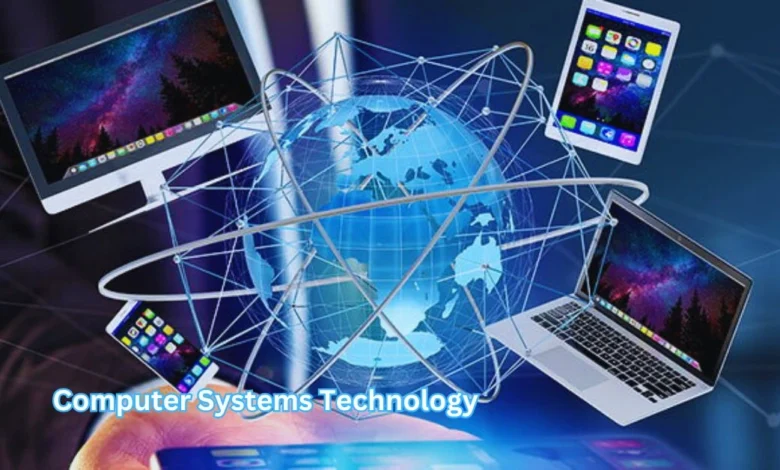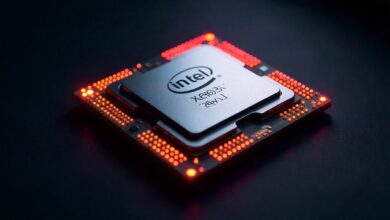Computer Systems Technology: Advancements in System Architecture and Performance

Introduction to Computer Systems Technology
Computer systems technology is the backbone of our digital world. From smartphones to supercomputers, it shapes how we live, work, and connect. As technology advances at a breakneck pace, understanding its evolution becomes crucial for anyone interested in the field.
The journey of Computer Systems Technology has been remarkable. It’s not just about powerful machines; it’s also about innovative architectures that optimize performance and efficiency. With each leap forward, new possibilities emerge—transforming industries and enhancing user experiences.
In this blog post, we’ll explore the fascinating advancements in system architecture and performance within computer systems technology. Join us as we delve into how these developments are revolutionizing everything from everyday computing tasks to complex data processing solutions.
Evolution of System Architecture
The evolution of system architecture has been a remarkable journey, reflecting our growing needs and technological advancements. Early computing systems were bulky and limited in functionality. They relied heavily on discrete components that constrained performance.
As technology progressed, the introduction of integrated circuits revolutionized design. These compact units enabled faster processing speeds and reduced power consumption, paving the way for more complex architectures.
With the rise of microprocessors in the 1970s, personal computers emerged as a viable option for everyday users. This democratization transformed how people interacted with technology.
In recent years, we’ve seen multi-core processors dominate the landscape. This shift allows simultaneous processing tasks, enhancing overall efficiency in various applications.
Emerging frameworks like RISC (Reduced Instruction Set Computer) have further optimized system designs for high-performance environments. Each stride forward sets new standards and expectations within computer systems technology.
Advancements in Processor Technology
The landscape of processor technology has undergone remarkable transformations in recent years. Innovations like multi-core processors have significantly increased computing power, enabling simultaneous task execution without sacrificing performance.
With advancements in fabrication techniques, we now see chips built on smaller nodes. This shift allows for higher transistor density and improved energy efficiency. As a result, devices run faster while consuming less power.
Additionally, the advent of specialized processors has changed the game entirely. Graphics Processing Units (GPUs) are no longer just for rendering images; they excel at parallel processing tasks essential for machine learning and artificial intelligence.
Emerging technologies such as quantum computing promise to revolutionize how data is processed. While still in their infancy, these systems could potentially solve complex problems that current classical computers struggle with. The future of processor technology looks bright and full of possibilities.
Impact of Cloud Computing on System Performance
Cloud computing has revolutionized how we approach system performance. By offloading processing tasks to remote servers, organizations can access vast resources without heavy investments in physical hardware.
This technology enhances scalability significantly. Businesses can seamlessly scale their operations up or down based on demand. This flexibility allows for optimal resource utilization and cost efficiency.
Moreover, cloud platforms typically offer advanced tools for monitoring performance metrics. Real-time analysis helps identify bottlenecks swiftly, enabling timely interventions.
Data storage becomes more efficient as well. Companies no longer need to worry about local storage limitations when they can store massive amounts of data in the cloud with easy retrieval options.
Collaboration is also transformed through cloud computing. Teams working across different locations can access shared systems instantly, improving productivity and innovation while maintaining high system performance levels.
Virtualization and its Role in System Architecture
Virtualization has transformed the landscape of computer systems technology. It allows multiple virtual instances to run on a single physical machine, optimizing resource use and reducing costs.
This innovation enhances system architecture by promoting flexibility. With virtualization, businesses can deploy applications rapidly without the need for extensive hardware investments. Each virtual machine operates independently, which means software testing and development processes become more efficient.
Moreover, virtualization improves scalability. Organizations can easily adjust resources according to demand without significant downtime or disruption. This adaptability is crucial in today’s fast-paced tech environment.
Security also benefits from this approach; isolation between virtual machines helps contain potential threats within a single instance rather than affecting the entire system. As organizations continue to embrace cloud solutions, virtualization remains at the forefront of modern computing strategies, driving efficiency and reliability across diverse applications.
Future Possibilities and Innovations in Computer Systems
The future of computer systems technology is brimming with possibilities. Emerging innovations are poised to redefine how we interact with machines.
Quantum computing stands at the forefront. This technology could exponentially increase processing power, solving complex problems in seconds that would take classical computers years. Industries such as medicine and finance may experience revolutionary advancements.
Artificial intelligence continues to evolve, leading to smarter systems capable of learning and adapting. With AI integrated into system architecture, real-time analytics becomes not just possible but practical.
Moreover, edge computing is gaining traction. By processing data closer to its source, latency decreases significantly while bandwidth usage drops. This shift will enhance user experiences across various applications.
As these technologies converge, we can anticipate seamless integration between hardware and software solutions. The landscape of Computer Systems Technology will be transformed into an ecosystem where efficiency reigns supreme and innovation knows no bounds.
Conclusion
Computer Systems Technology continues to evolve at a rapid pace. The advancements in system architecture and performance shape our daily lives, enhancing everything from personal devices to enterprise solutions. As we embrace innovations like cloud computing and virtualization, the future holds exciting possibilities.
Emerging technologies promise even more efficient systems that can handle increasing workloads with ease. With artificial intelligence and machine learning making their way into Computer Systems Technology, the potential for improved performance is immense.
Staying informed about these developments is essential for both professionals and enthusiasts alike. Understanding the trends in Computer Systems Technology equips us all to navigate this dynamic landscape effectively. The journey ahead looks promising as we continue to push boundaries in technology innovation.
Learn about the latest advancements in tech on Numberlina.com.



